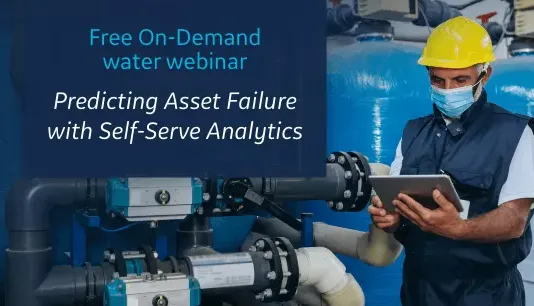Proficy Industrial Software
Proficy Industrial Software
Overview
![2025 mfg the power of proficy software]()
![2024 mfg product page proficy software outcomes]()
![2024 mfg product page proficy software outcomes]()
![2024 mfg product page proficy software outcomes]()
![2024 mfg product page proficy software outcomes]()
![2024 mfg product page proficy software outcomes]()
![2024 mfg product page proficy software outcomes]()
![2024 mfg gartner mes]()
![2024 mfg proficy software family mes]()
![2024 mfg proficy software family historian]()
![2024 mfg proficy software family operations hub]()
![2024 mfg proficy software family csense]()
![2024 mfg proficy software family hmi scada]()
![scheduler ge digital]()
The Power of Proficy Software

Proficy Software & Services empowers teams, illuminating the path to a greener, more profitable future. Our proven industrial software accelerates innovation, enables connected workers, and operationalizes sustainability.
The Proficy portfolio includes cloud-based and on-prem HMI/SCADA, MES, industrial data management, and analytics. Proficy offers architecture flexibility including single machines, remote substations, and complex, distributed networks that span multiple factories and geographies. We’re driving measurable progress for over 20,000 diverse customers around the world.
Our software solves the toughest industrial challenges and is used in applications such as discrete, hybrid, and continuous manufacturing; utilities automation; metro transit; and much more. Proficy offers architecture flexibility including single machines, remote substations, and complex, distributed networks that span multiple factories and geographies.
The Proficy portfolio includes cloud-based and on-prem HMI/SCADA, MES, industrial data management, and analytics. Proficy offers architecture flexibility including single machines, remote substations, and complex, distributed networks that span multiple factories and geographies. We’re driving measurable progress for over 20,000 diverse customers around the world.
Our software solves the toughest industrial challenges and is used in applications such as discrete, hybrid, and continuous manufacturing; utilities automation; metro transit; and much more. Proficy offers architecture flexibility including single machines, remote substations, and complex, distributed networks that span multiple factories and geographies.
"[GE Vernova’s] investments in its comprehensive Proficy Unified Portfolio will greatly expand how it serves customers with modern HMI/SCADA and scalable historian technologies, as well as new products spanning cloud-based MES and analytics."
Vice President, ARC Advisory Group
Outcomes


Increase Efficiency

Increase Value

Ensure Compliance

Lower Maintenance Costs

Improve Productivity
Gartner MES Reports
Gartner recognizes GE Vernova as Leader and Customer’s Choice in 2023.

Proficy Products

Proficy Smart Factory (MES)
Enable lean manufacturing through IoT insights and intelligence. Proficy Smart Factory offers cloud-based or on-prem composable manufacturing execution system (MES) solutions that can manage, optimize and transform your operations, powered by data integration, IoT, machine learning, and predictive analytics. By bringing together the digital world with the physical world of manufacturing, Proficy Smart Factory can deliver holistic performance management for today’s connected enterprise.

Proficy Historian
The world's only cloud-native OT historian, Proficy Historian is a best-in-class data management solution for cloud or on-prem that collects industrial time-series and A&E data at very high speed, stores it efficiently and securely, distributes it, and allows for fast retrieval and analysis —driving greater business value. Used for decades by thousands of customers around the world, Proficy Historian changes the way organizations perform and compete by making data available for asset and process performance analysis.

Proficy Operations Hub
Enable collaboration and continuous improvement with centralized visualization/configuration, digitized processes, and intelligence. With Proficy Operations Hub, teams across all levels in an organization can increase operational efficiency and make better decisions based on real-time and historical plant-wide application data, including historian, HMI/SCADA, MES and third party. Users can monitor, control, provide data entry, and perform analysis all through Proficy Operations Hub.

Proficy CSense
Optimize with 5-in-1 analytics capabilities in a closed-loop solution. Proficy CSense uses AI and machine learning to enable process engineers to combine data across industrial data sources and rapidly identify problems, discover root causes, predict future performance, and automate actions to continuously improve quality, utilization, productivity, and delivery of operations.
Additionally, Proficy CSense provides the capabilities to mine insight from historical data and rapidly develop, test, and deploy simple calculations, predictive analytics, and optimization and control solutions to reduce variability and improve operations.
Additionally, Proficy CSense provides the capabilities to mine insight from historical data and rapidly develop, test, and deploy simple calculations, predictive analytics, and optimization and control solutions to reduce variability and improve operations.

Proficy HMI/SCADA
Drive smarter operator decisions with model-based High Performance HMI for faster response and development. With our industry-leading iFIX and CIMPLICITY HMI/SCADA, you can precisely monitor, control, and visualize every aspect of your operations for intelligent control. With a quick glance, operators know what’s important and the right actions to drive increased efficiency and reduced costs.

Proficy Scheduler / ROB-EX
Optimize production scheduling with Proficy Scheduler / ROB-EX, a dynamic and interactive solution that adapts in real time to resource availability. Easily plan, execute, and monitor production with an intuitive graphical interface that simplifies scheduling and keeps operations on track. Minimize bottlenecks, reduce lead times, and integrate seamlessly with ERP and MES systems for smarter, more efficient operations.
How Can We Help You?
If you would like more information on any of our products and services, please take a moment to fill out the form below. We look forward to connecting with you!
Thank you for getting in touch!
We’ve received your message, One of our colleagues will get back to you soon. Have a great day!



















